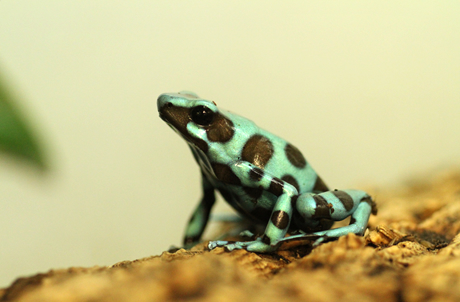Join our hands to conserve nature!
Dendrobatidae sp.
Poison Arrow Frogs, Poison Frogs
Around 2.5-5 cm
Tropical rainforests in Central and South America

Around 2.5-5 cm



Poison dart frogs are threatened by habitat loss or degradation resulting from agricultural development, cattle ranching, logging, pollution and human settlement. Climate change and pet trade pose even more danger to them. Some species have declined dramatically by 80% in 10 years.